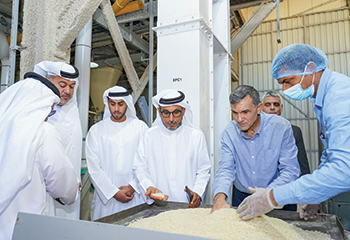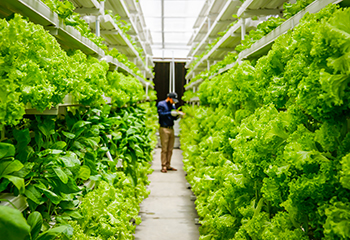
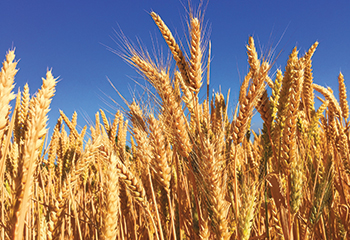 GCC agricultural sector: big scope
GCC agricultural sector: big scope
The Middle East can lead another agriculture revolution by pioneering a type of precision fermentation that converts energy and a few ingredients into food, according to the latest research by Strategy& Middle East, part of PwC network.
Energy-to-food can alleviate many of the pressures on land and freshwater, while lessening the impact on the environment, the research said.
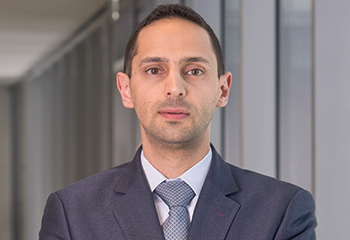 |
|
Samer Al Chikhani |
Agriculture needs to feed a world population that is projected to grow to 9.7 billion people by 2050, 1.8 billion people more than today. These people will need to be fed in a sustainable manner, which requires overcoming multiple problems including scarcity of land and freshwater, GHG emissions, the high cost of nutritious food, and vulnerability to geopolitical risk and economic disruption.
LOW EMISSION FOOD
“The Middle East, especially the GCC, can answer this challenge, and produce healthy, low emissions foods,” said Dr Yahya Anouti, Partner with Strategy& Middle East and the ESG leader in the region.
“The GCC is uniquely positioned for success in pursuing energy-to-food because it possesses the world’s lowest levelized cost of renewables. Energy makes up 40 per cent to 60 per cent of the expense of producing energy-to-food proteins. Assuming GCC producers incur non-energy-related costs similar to the global average, their energy-to-food proteins will be significantly cheaper than those created anywhere else in the world,” he added.
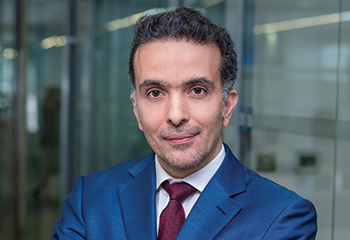 |
|
Shihab Elborai |
The energy-to-food process mostly relies on gases (such as CO2 and the other gases in air) and water as the sources of carbon and oxygen, converting energy and a handful of ingredients to a variety of proteins and other food ingredients. The environmental impact is minimal, as it requires very little land or water compared with traditional agriculture, such as animal- and plant-based proteins. It also emits fewer GHG emissions.
PRESTIGE PROJECT
Dr Shihab Elborai, Partner with Strategy& and the co-leader of the firm’s Sustainability platform, said: “If GCC countries are successful in pioneering energy-to-food, using renewable energy to feed the world it could become a prestige project that highlights the region’s technological prowess to take the lead in sustainability. It would also promote regional economic diversification.”
Already, the market for alternative proteins is attracting considerable investment and could be worth 1.4 trillion globally by 2050, according to statistics from Credit Suisse. Invested capital in precision fermentation companies has increased at an annual rate of 250 percent since 2018. Although most of the investment is occurring in Europe and the US, precision fermentation startups are emerging in other countries, such as China, India, and Israel. However, for all the promise energy-to-food offers, moving from lab to table means overcoming three connected challenges: cost, consumer acceptance, and scale.
SCALING CRITICAL
.jpg) |
Yahya Anouti |
“The technology is in its infancy and so expensive,” commented Samer Al Chikhani, Principal with Strategy & Middle East. “Food is emotive and highly regulated, which makes consumer acceptance vital. Building scale quickly is critical to meeting demand and reducing the cost per kilogram of proteins produced by precision fermentation,” he added.
For GCC countries to take full advantage, they need to act in six areas: R&D, investment in infrastructure, value chain development, talent, regulation and policy, and consumer awareness.
R&D: Governments should invest in R&D so the technology matures and energy-to-food proteins become cost competitive. That means more funds for early-stage and often high-risk innovations.
Investment in infrastructure: There should be joint public and private sector investment in expensive infrastructure.
Value chain development: Governments should develop a complete energy-to-food value chain. That means ensuring private sector producers have access to raw materials and feedstock.
Talent: Energy-to-food demands a deep talent pool for R&D and commercialisation. That means leading experts in molecular biology, chemical and strain engineering, data science, product development, and plant design – along with clinicians, nutritionists, and policy experts.
Regulation and policy: Regulation and policy should promote energy-to-food proteins and safeguard quality. Incentives can assist companies with the cost of investment in R&D and renewables.
Consumer awareness: The public and private sectors should gain consumer acceptance through education and standards. Consumers will need to know that energy-to-food proteins are environmentally sound, healthy, nutritionally beneficial, halal (permissible) for Muslims, and acceptable in other cultural and religious contexts.

